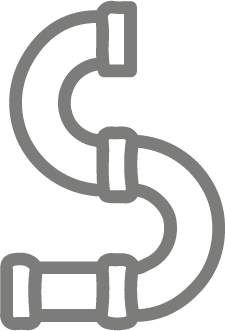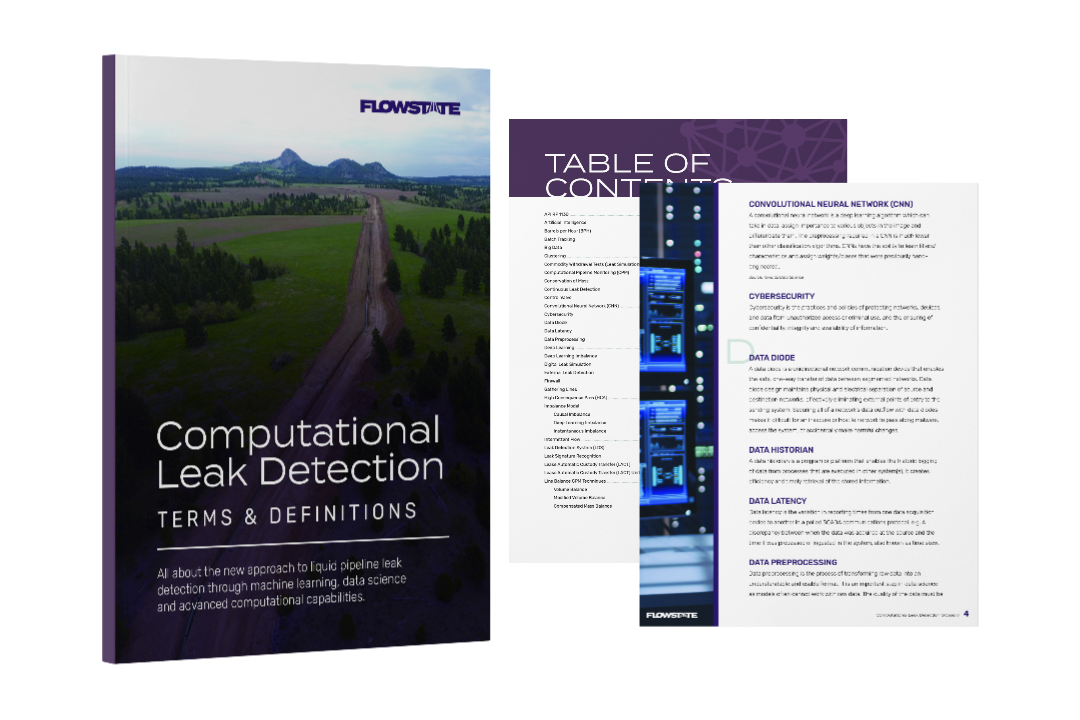QUICK NAV: MACHINE LEARNING | PIPELINE SEGMENTS | CUSTOMIZE

Flowstate’s machine learning models use pipeline flow rate data to learn operational behaviors and patterns of each pipeline segment. The machine learning models predict what output flow should be. That prediction is compared to actual output flow data in the deep learning imbalance model, and used to detect leaks.
Machine learning reduces false alarms and detects smaller leaks by:
Additionally, Flowstate’s machine learning uses a variety of leak detection methods, customized for your pipeline segment’s characteristics such as:

Class A segments are characterized by having consistent flow, minimal noise, and simple topology (inlets and outlets).
Because of these conditions, the Class A segment offers the least complexity and is therefore a candidate for most model types. For the same reason, Class A segments will also typically have faster detection times possible.
Class B segments are still fairly consistent and exhibit low levels of measurement noise. However, operational conditions such as intermittent flow may lead to complexities such as slack or packing/unpacking. In addition, shorter flow cycles or activity on the line may pose difficulties for methods like signature recognition.
For these reasons, some Class B segments may not be candidates for certain model types. In addition, detection times may be longer for Class B segments.
Class C segments posses many challenges for leak detection. Noisy data – often due to less accurate devices – can reduce the sensitivity possible for leak detection. Often flow in gathering systems is inconsistent and intermittent. Gathering systems may also have complex topology – with many injections complicating the hydraulics.
For these reasons, Class C segments are often very limited in the methods available to them and often over-short monitoring may be the only viable solution.

Classifying a segment provides a starting point for the types of leak detection methods that will be developed and delivered. We will work with your team to determine both methods that will be used and the performance requirements that will be established including:
leak size, time to detection, and false alarm rate.
| Class | Data Failure | Over/Short | Rupture | SVB 2% | SVB 1% | Leak Signature |
|---|---|---|---|---|---|---|
| Class A | X | X | X | X | X | X |
| Class B | X | X | X | X | ||
| Class C | X | X |
There may be other contributing factors on a segment that may influence which models are selected for a segment.
These could include things such as:
Downstream Activity (i.e. control valves, injections, etc.)
Measurement device drift and noise levels
Measurement device type (accuracy)
Slack conditions
Packing and unpacking
Transient conditions
Batching
Nominally, a minimum of three weeks of operational data is needed to use machine learning to train and test a model for a particular pipeline.
However, if the line is a Class B or Class C segment with irregular or inconsistent flow, a larger window of data will need to be collected to adequately learn the operations.
Our system is developed to comply with API RP 1130.
Learn more about our new approach to leak detection: